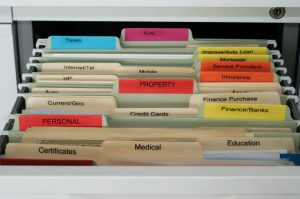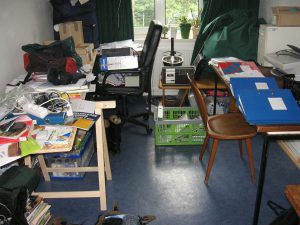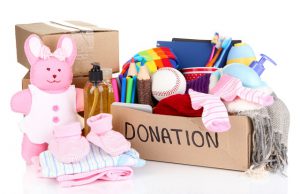 Looking for more time and less stress in your life? Part of the answer may be right in front of you. It also may be on your kitchen counter, floor, closet, shelves and in your two car garage that now only fits one car. Many people accumulate a large amount of “stuff” that is greater than their ability to find a place to keep it. The resulting clutter adds time spent cleaning, looking for misplaced items and added spending on replacing things you own but can’t find. This overload of possessions can easily overflow into rented offsite storage adding over $1000 a year to the family budget.
Looking for more time and less stress in your life? Part of the answer may be right in front of you. It also may be on your kitchen counter, floor, closet, shelves and in your two car garage that now only fits one car. Many people accumulate a large amount of “stuff” that is greater than their ability to find a place to keep it. The resulting clutter adds time spent cleaning, looking for misplaced items and added spending on replacing things you own but can’t find. This overload of possessions can easily overflow into rented offsite storage adding over $1000 a year to the family budget.
Clutter can affect your health as well as your finances. Clutter tends to hold dust, pet hair and other allergens. It can also keep you from cleaning your house thoroughly. This can cause problems for people with asthma and allergies. A cluttered home increases the risk of slipping or falling. Older adults are especially vulnerable because of an increased incidence of broken bones with age.
Get Motivated
Organization is a learned skill but is an essential one in our busy lives. Clutter didn’t appear in your home overnight so don’t expect it to disappear in a day or two. Not knowing where is to start is a common problem. For many people, the thought of getting started clearing their clutter is overwhelming. Start the process by focusing on the area that bothers you most or is easiest to do. The goal is to be successful in organizing one area then move on to the next. Don’t start with sentimental items such as family heirlooms.
Steps to a Clear the Clutter Strategy
- Start by analyzing your situation. What works? What doesn’t? What do you want to achieve? How does this work for your family? Part of getting rid of clutter and then keeping it from coming back is to develop a plan that works for all members of the family. Some people may want to create a minimalistic lifestyle while others just want to be able to find their car keys.
- The next step is to create a clutter conquering plan. You will probably have different goals for different rooms. Decide how you want to organize each space before purchasing anything. As you clear out items that you no longer need, you may find that you have more space than you originally thought.
- Take action! Be decisive about what keep and what to toss. Pull all items out of the area being organized and decide if each individual item is something you want to keep. Don’t fall in the “I might need it someday” trap. If you haven’t used it in the last year or so, why are you keeping it? Get rid of broken items, old technology and clothes that don’t fit or that do you don’t really like. Have boxes or bags for items you choose not to keep. Throw out, sell, donate or recycle unwanted items.

Clear the Clutter and Clear Your Mind
There is no one perfect way to get rid of clutter. Find a method that works for your family and get started. Coming home to a place that is relaxing and organized to your needs will provide a peaceful haven in this busy world.
To learn more about reduce household clutter, visit the University of Illinois Extension site, Dealing with Clutter.
For information related to allergies, asthma and clutter, visit Cleaning to Control Allergies & Asthma: Basics
 0
0

